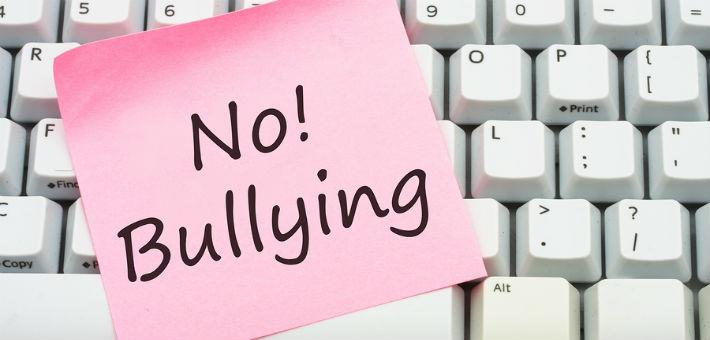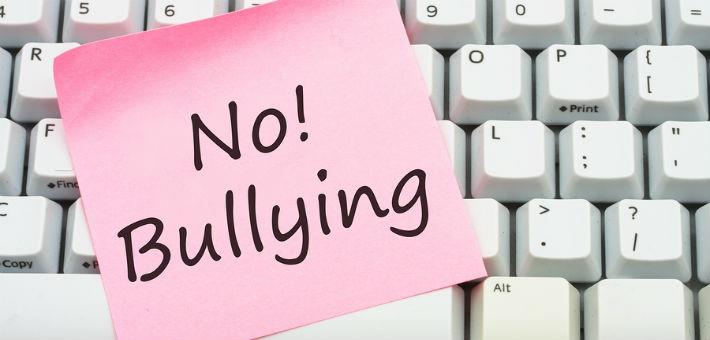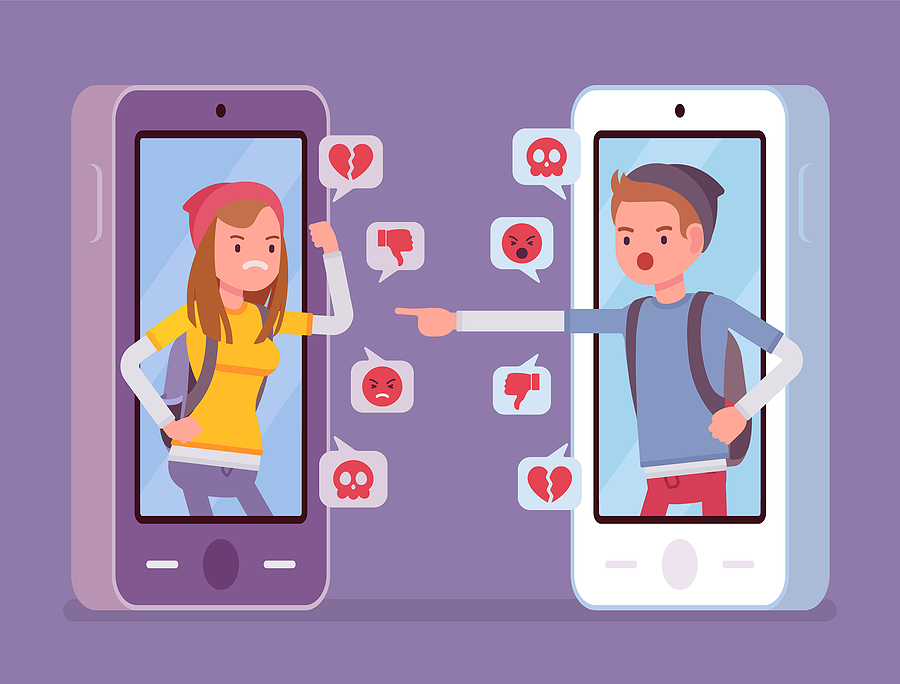
Bitefile social norms in online hurtful behavior
Hate speech, swearing, threats, belittling, bullying ... why do people engage in such hurtful behavior online? Research shows that social norms are a major driver of such behavior. Social norms are the beliefs a person has about what others do and think is appropriate. How do social norms influence behavior? What role do social norms play in online hurtful behavior? And how can we encourage positive social norms online? Bitescience dived into the scientific research and found out for you.
The insights in this bitefile are based on research with children between 4 and 16 years old. The exact age group differs per study. The bitefile was made in collaboration with the Dutch Media Literacy Network. All consulted literature can be found here.
What are social norms and how do they influence behavior?
Social norms are the informal, usually unwritten rules that define acceptable and appropriate behavior within a particular group or community (such as a family, group of friends or online community). There are two types of social norms:
- Descriptive norm: what we think others do (e.g., many people send hate messages).
- Injunctive norm: what we think others approve or disapprove of or expect of us (for example: many people think sending hate messages is okay).
People are more likely to engage in a particular behavior if they believe that others in their social circle or community engage in the behavior (descriptive norm), or because they believe that others important to them approve of or expect the behavior (injunctive norm). Social norms influence behavior because people like to belong to a group. To "belong to the group," people often conform to their perceived norm in a group. If people conform to the norm, they expect to be socially accepted or rewarded; if they do not conform, they expect to be socially punished or excluded.
What is the role of social norms in online hurtful behavior?
Research shows that people are more likely to engage in hurtful behavior online if they think others do or approve. It also works in reverse: if people think online hurtful behavior is frowned upon by the social environment, they do it much less. Thus, social norms play an important role in both stimulating and inhibiting online offensive behavior.
Different forms of online offensive behavior are driven by social norms. For example:
- Hate speech: People who encounter hate more frequently in online groups are more likely to post hate comments themselves because they have a stronger sense that others approve of that behavior. People who encounter hate more frequently online also have a stronger belief that others like them post hate comments online.However, this does not automatically cause them to do so more often themselves.
- Rudeness: People who post rude comments on news websites are more likely to do so if they see others also posting rude comments in response to their post. And if others reward their rude comments with a like, thumbs up, heart or other positive emoji.
- Cyberbullying: Cyberbullying is more common in classes where the norm is that online bullying is okay, for example because it is thought that others find it funny (and therefore approve). It also works the other way around: teens are less likely to bully others online if they feel that others important to them don't either and disapprove of that behavior.
5 tips to boost positive social norms online
- Set a good example and reward others for positive behavior.
Posting positive or constructive comments yourself and rewarding such comments from others with likes, hearts or other positive emojis encourages positive behavior online. Social media platforms, news websites and online discussion forums can help in this regard by using algorithms that automatically reward respectful responses. - Do not condone online hurtful behavior by others.
By not "rewarding" hurtful comments and posts online with likes, hearts or other positive emojis, online hurtful behavior is discouraged. 'Punishing' others for their hurtful responses - by contradicting them or disapproving of their responses by a thumbs down - can signal that the behavior is socially unacceptable. But beware: it can also backfire and actually cause more negative comments to be posted. Social media platforms, news websites and online discussion forums can also help here by providing tools that make it easy for users to disapprove or report hurtful comments. - Remove online hurtful comments.
Removing hurtful comments online makes people feel that others behave less hurtfully. So it creates a positive change in the descriptive norm. This then causes people to post less hurtful comments themselves. Here again lies a role for social media platforms, news websites and online discussion forums. Smart language algorithms exist that can automatically recognize offensive responses. By using such algorithms, hurtful comments can be automatically recognized and removed. - Make it clear what the rules are.
Clearly communicating the rules of social behavior ensures that fewer hurtful comments are posted. This applies to both smaller online groups (such as a WhatsApp group) and larger ones (such as news websites or social media platforms). However, such a message must meet certain conditions:- it must name unacceptable behavior (injunctive norm);
- make clear the consequences of violating the norm;
- indicate how it will be monitored and enforced. For example, "Comments in this group will be removed if they are offensive or harassing. Our [number of] moderators help encourage respectful discussion."
- Combat misconceptions about offensive behavior online.
People often have misconceptions about what others do and what behavior they approve or disapprove of. How that comes about is explained by 'social norm theory'.
What is social norm theory?
According to social norm theory, the extent to which others behave negatively and riskily and approve such behavior is often overestimated. Similarly, the extent to which others behave positively and approve such behavior is underestimated. Thus, many people are likely to think that most others behave offensively online and approve of such behavior. When in reality, most people behave online mostly socially and expect the same from others.
Such misconceptions can arise because hurtful behavior by a small number of individuals is highly visible online, there is a lot of media coverage of such negative behavior, and it is highlighted in everyday conversations. Because the above misconceptions about social norms can encourage hurtful behavior online, it is important to combat those misconceptions. This can be done by providing information about what people actually do and care about. In doing so, two things are important:
- Provide compelling evidence that most people behave in a respectful way online (or in a specific chat group or news site) and think it is important, for example, by sharing figures from a reliable survey (e.g., "Most children at this school (9 out of 10) agree that there is respectful communication in the class app").
- Avoid giving people the idea that norms have become mostly imposed from "above" (e.g., by the government). It works better if the norm is communicated from "within" by someone from the group with whom people identify.
Related articles

“If They Bully, I’ll Bully Too”: How Social Norms Relate To Teens’ Cyberbullying Behavior

Cyberbullying via Mobile Phones Most Upsetting

Anti-Cyberbullying Messages on Facebook: Most Successful With a Positive Tone

e-Learning to intervene in cyberbullying incidents
